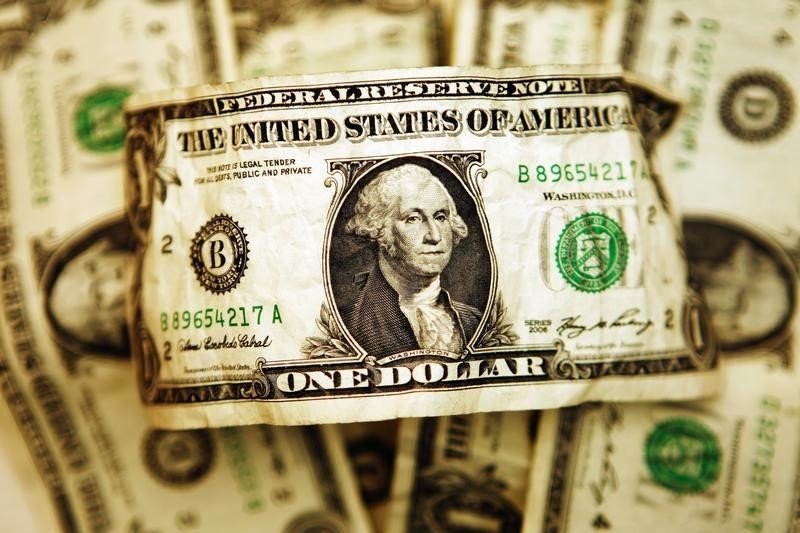Forex
Dollar edges lower, but remains elevated on global growth concerns


© Reuters.
Investing.com – The U.S. dollar edged lower in early European trade Wednesday, but remained near a six-month peak as global growth concerns weighed on risk appetite.
At 03:20 ET (07:20 GMT), the Dollar Index, which tracks the greenback against a basket of six other currencies, traded 0.1% lower at 104.612, not far off the six-month high of 104.90 touched overnight.
German factory orders slump; safe-haven dollar in demand
The dollar has given back some of its recent gains in early European trade Wednesday, but it remains near its highest levels since mid-March as a string of disappointing economic data releases resulted in traders seeking out this safe haven.
The weak data continued Wednesday, as slumped 11.7% on the month in July, much weaker than the fall of 4.0% expected.
Manufacturing data from Germany, Britain and the euro area showed declines on Tuesday, while their service sectors fell into contraction.
rose 0.2% to 1.0737, having breached a three-month low of 1.0705 overnight, while climbed 0.2% to 1.2582, having also touched a three-month low late Tuesday.
Eurozone retail sales set to confirm trend
are due for release later in the session, and are expected to have weakened in July, dropping 0.1% on the month in July, down 1.2% on an annual basis, as consumers in the region remain under pressure with inflation still elevated.
The meets next week, and a run of soft eurozone data has raised the likelihood that the bank’s officials will agree to a pause in the rate-hiking cycle, further weighing on the single currency.
The U.S. is also seen holding steady later this month, with Fed Governor saying on Tuesday the latest round of economic data gives the U.S. central bank space to see if it needs to raise interest rates again.
There is the release of data later in the session which could provide more information about the health of the U.S. economy.
Yen remains near 10-month low
fell 0.3% to 147.27, with the yen recovering slightly from a 10-month low hit earlier in the session.
Japanese officials once again warned markets on betting against the currency, with top currency diplomat Masato Kanda telling reporters that the government “won’t rule out any options” if speculation against the yen persists.
Japanese authorities intervened to support the currency after it hit 30-year lows last year, and the market is awaiting similar action as the pair gradually heads towards the 150 level.
rose 0.1% to 7.3087, crossing the 7.3 mark and hitting its weakest level to the dollar since November 2022 as markets continued to fret over a slowing economic recovery in the world’s second-largest economy.
rose 0.1% to 0.6384, with the Aussie dollar helped by data showing grew slightly more than expected in the second quarter, easing concerns over a recession.

 Forex3 years ago
Forex3 years agoForex Today: the dollar is gaining strength amid gloomy sentiment at the start of the Fed’s week

 Forex3 years ago
Forex3 years agoUnbiased review of Pocket Option broker

 Forex3 years ago
Forex3 years agoDollar to pound sterling exchange rate today: Pound plummeted to its lowest since 1985

 Forex3 years ago
Forex3 years agoHow is the Australian dollar doing today?

 Cryptocurrency3 years ago
Cryptocurrency3 years agoWhat happened in the crypto market – current events today

 World3 years ago
World3 years agoWhy are modern video games an art form?

 Commodities3 years ago
Commodities3 years agoCopper continues to fall in price on expectations of lower demand in China

 Economy3 years ago
Economy3 years agoCrude oil tankers double in price due to EU anti-Russian sanctions





















